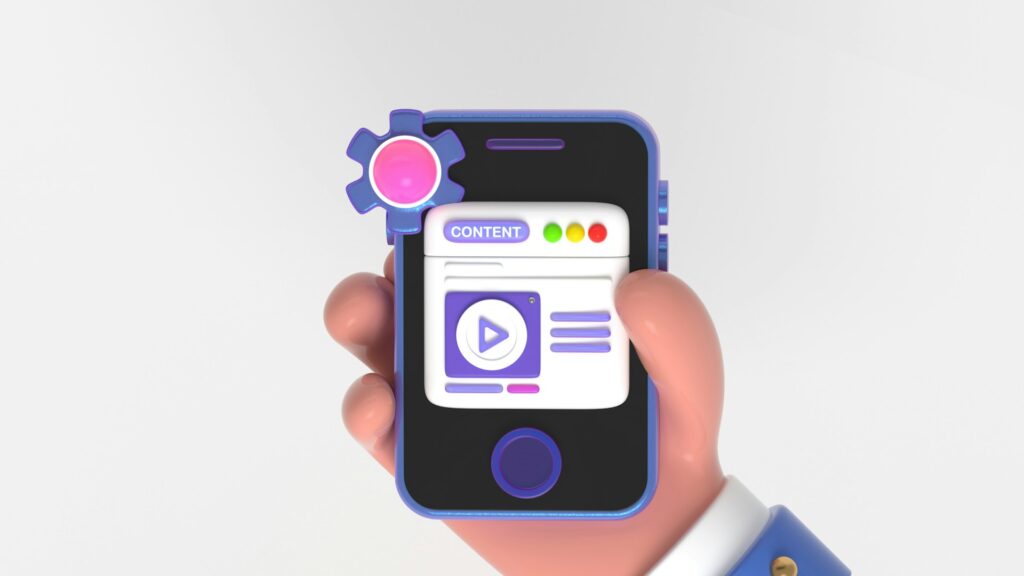You post a video, wait for the views to roll in, but nothing. Maybe a few clicks here and there, but no comments, short watch time, barely any engagement. That feeling is way too common. If you’re in a field like law or finance, where you’re used to working with precision and structure, it’s extra frustrating when your videos don’t seem to hit the mark.
Video platforms are made for connection. If people don’t feel something when they watch—trust, curiosity, clarity—they won’t stick around. Low engagement signals that something’s off, but the upside is, it can usually be fixed. And once it is, you’ll start to see a real boost across the board, from watch time to lead generation.

The Weekly Video Insider
Subscribe for weekly insider trends and tools for YouTube and Social Video


Identifying The Real Problem Behind Low Engagement
Before changing your entire format or upgrading gear, make sure you’re solving the right issue first. A lot of professionals jump straight to surface-level tweaks, like better graphics or fancier transitions. But most of the time, those things don’t solve engagement problems.
Here are a few of the most common reasons your videos might not be connecting:
1. You’re talking to the wrong audience, or not speaking their language
2. The first 10 seconds don’t make people want to keep watching
3. Your videos aren’t answering the actual questions your target clients have
4. You’re using content that’s heavy on information and light on clarity
5. There’s no visual consistency, so your brand feels all over the place
Knowing your audience inside and out is the foundation of getting engagement right. If you’re a tax advisor or attorney, for example, your ideal viewer probably isn’t binge-watching just for fun. They’re looking for answers, quick wins, or solutions to a problem that’s stressing them out.
So when your content is full of unnecessary setup or long personal backstories, it doesn’t hit. Ask yourself: What would someone type into search just before landing on your video? What situation are they in? What emotion are they feeling? If you can step into the shoes of that person, your message becomes way more relatable—and harder to scroll past.

Improving Video Content Quality So Viewers Stay Engaged
Clients judge your video quickly. Not just by what you say, but by how it looks, how it sounds, and how fast you get to the point. Good content doesn’t need a huge production team, but it does need solid planning.
Start with your script or outline. Focus on:
– Keeping intros short and clear. Let them know what they’ll get right away
– Replacing jargon with simple language. If someone has to Google every fourth word, you’ve lost them
– Using real-world context or examples. If you’re a business attorney, show how a contract tweak saved a client stress
– Breaking down complex info into digestible chunks. Use short sentences and label key tips
– Ending with something that nudges action, like scheduling a consult or learning more
Now think about your video and audio setup. These details matter more than many professionals think. You don’t need expensive gear, but you do need:
– Clear sound with minimal background noise
– Proper lighting—natural light or a soft LED setup works great
– A clean background with little to no clutter
When your video checks these boxes, it leaves a stronger impression. And consistently strong content leads to more loyal followers and real-world interest. You’ll see views turn into discovery calls, comments turn into leads, and uploads start working hands-free as your best marketing tool.




Optimizing for Platforms That Actually Match Viewer Behavior
Cross-posting the same clip on every platform without changes is where most people lose traction. Each one works differently, and your audience expects the content to match how they use it.
Here’s a quick breakdown of platform behavior:
– YouTube: Viewers are search-based. They want smart, structured, and longer content
– Instagram and TikTok: Users scroll fast. They need quick, attention-grabbing clips
– Facebook: Viewers expect casual content that’s highly shareable
If you aren’t considering these behaviors, your content misses people where they are. Here’s how to fix that:
– Format wisely: Use vertical video (9:16) for TikTok, Instagram Reels, and YouTube Shorts. Use horizontal (16:9) for long-form YouTube content
– Get your titles and thumbnails right. For YouTube, they affect your click-through rate more than most realize
– Add on-screen text. This is key for sound-off platforms
– Cut the fluff. All content should bring value fast, even longer videos
– Think repurpose, not repeat. Clip longer footage into short highlights for TikTok or Stories
Professionals in places like West Jordan putting out video content need to reshape how they post. The more aligned your post is with actual platform habits, the more your content works for you.

Smart Ways to Drive Viewer Interaction
Content doesn’t just perform—it gets people talking. But only if they’re clearly invited to engage.
Engagement isn’t just comments and likes. It’s time spent watching, clicking your links, or subscribing when it counts. You need to encourage interaction naturally.
Here are a few ways you can create more connection with your viewers:
– Ask a question at the end. Example: “What’s your biggest challenge when reviewing contracts?”
– Use the pinned comment area to push traffic to your site or offer a resource
– Reply to comments quickly, especially during the first few hours
– Launch Q&A videos regularly. Ask for questions in advance, and use answers as future clips
– Use platform metrics to find what’s performing. Focus on adjusting weak spots and doubling up where people stay engaged
We saw this happen for a tax consultant we work with. His videos barely got noticed until he added a question at the end. Within two weeks, topic ideas started pouring in, and his watch time doubled.
Most people just need an obvious cue. Encourage feedback, but make it simple and clear.



The Shift That Sets You Up for Real Results
If low engagement has been your biggest video hurdle, you’re not alone. The good news is that with a few smart changes, you can turn things around.
Start by looking at your KPIs:
– Are you getting traffic that leads to calls or booked consults?
– Are people clicking through to your website?
– Is your subscriber count going up steadily?
– Are views growing when titles and hooks are better designed?
Once you measure what actually matters, you can adapt your video strategy to match. Take a step back, tighten what’s not working, then build forward with strong structure.
Two rules that never fail:
1. Consistency wins every time. A solid weekly posting schedule beats scrambling for one big post
2. Let a pro handle what pulls your time away from client work. You don’t need to burn out trying to build an entire digital studio out of your office
Every video you publish now sets up your next quarter of outreach. Start from a smarter strategy. Let your channel work for your growth, instead of exhausting your team trying to make content fit every trend. When your system is dialed in, your audience sticks around—and your business grows with it.
Struggling to turn video views into real leads? Discover how working with a dedicated YouTube consultant can help sharpen your message, improve engagement, and turn every upload into a growth opportunity. At Acceleratus Media, we guide professionals like you through a strategic framework that boosts visibility, leads, and revenue across platforms.




